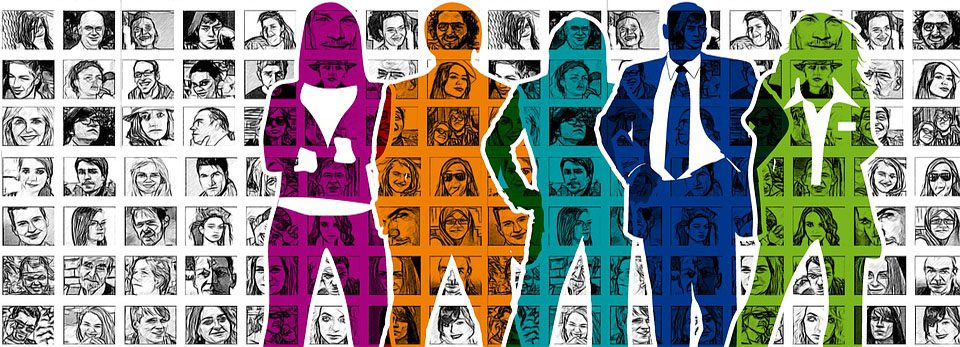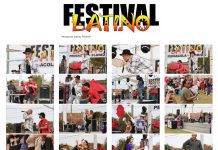
Colaboración internacional examina los niveles de habilidad de los inmigrantes
Una colaboración internacional de investigación entre el Departamento de Gobierno de la University of West Florida y un profesor visitante de Holanda está tratando de entender lo que moldea las actitudes hacia los inmigrantes en Europa.
La Dra. Michelle Williams, presidenta del Departamento de Gobierno de la UWF y profesora de ciencias políticas, y Panagiotis Chasapopoulos, investigador graduado de Tilberg University en Holanda, comenzaron a corresponder después de que Chasapopoulos leyó el libro de Williams “The Impact of Radical Right-Wing Parties in West Europian Democracies” y se acercó a ella.
“Estaba realmente emocionado de que pudiéramos hacer posible traerlo aquí desde Holanda para que pudiéramos pasar un tiempo trabajando en un proyecto que se convertirá en una parte de su disertación,” dijo Williams.
Con la especialización de la investigación de Williams en partidos de la derecha y la trayectoria de Chasapopoulos en economía, la pareja pudo abordar la cuestión de las percepciones de la gente de los inmigrantes de diferentes disciplinas.
“Panos está aquí para colaborar conmigo en el lado anti-inmigrante y político del proyecto porque es un economista,” dijo Williams. “Sin embargo, trabaja en un entorno de ciencias sociales interdisciplinario donde realmente miran las políticas desde una variedad de perspectivas disciplinarias – desde la perspectiva económica, pero también la perspectiva política, la perspectiva sociológica, la psicológica, la antropológica, la histórica. Y se ocupan de una gran cantidad de problemas de política del mundo real y en tiempo real.”
Chasapopoulos dijo que el tema es uno que se está reproduciendo a través de Europa en este momento y afecta a millones de personas.
“La inmigración es realmente un tema candente en todo el mundo y especialmente en Europa, no sólo debido a la reciente crisis de refugiados, sino también porque Europa es un área que alberga a la mayoría de los inmigrantes en todo el mundo,” dijo. “Europa acoge a más de 75 millones de inmigrantes. En los últimos 15 años, Europa agregó más de 20 millones de inmigrantes – 1,3 millones por año.”
Con tanta gente que viene a Europa, las actitudes hacia esos inmigrantes se han vuelto menos acogedoras.
“Vemos que la inmigración está aumentando, la diversidad de la población está aumentando y, al mismo tiempo, esto tiene un efecto en la forma en que la gente ve a los inmigrantes.” dijo Chasapopoulos. “Al mismo tiempo, vemos una tendencia de creciente exclusión étnica. Vemos que Gran Bretaña decidió salir de la Unión Europea. Los partidos de extrema derecha y los partidos con agendas anti-inmigrantes están aumentando su popularidad en Europa desde Francia hasta Austria y Hungría.”
El par comenzó a mirar los factores que podrían determinar cómo los nativos se sienten sobre inmigrantes.
“Estábamos interesados en examinar el otro lado de la imagen de las actitudes anti-inmigrantes,” dijo Williams. “Normalmente, cuando las personas estudian las actitudes anti-inmigrantes, lo estudian desde la perspectiva de la persona que tiene esas actitudes. Y a menudo las personas se caracterizan por tener esas actitudes porque son racistas o xenófobas. Otra caracterización ha sido desde una perspectiva económica como una amenaza en el mercado de trabajo, o ellos (inmigrantes) son vistos como un drenaje en el sistema de bienestar social.”
El par también consideró cómo el contacto con los inmigrantes afecta las actitudes.
“Las concentraciones más altas de inmigrantes afectan las actitudes de las personas de manera más positiva porque tienen más contacto y por lo tanto entienden mejor a los inmigrantes, o más negativamente porque no encuentran que esas personas sean como ellos y por lo tanto se resienten,” dijo Williams.
Después de considerar los posibles factores, los investigadores plantearon su pregunta de investigación.
“Lo que nos interesó es cómo los rasgos del inmigrante afectan la actitud hacia el inmigrante, en lugar de las actitudes que son sostenidas por el poseedor de la actitud como si surgieran sólo dentro de esa persona,” dijo Williams.
El par optó por mirar el nivel de educación y habilidad de los inmigrantes, con la idea de que aquellos con mayores niveles de habilidad podrían ser más deseables. También analizaron los valores culturales de los inmigrantes con la suposición de que cuanto más en la cultura los inmigrantes son para la población nativa, más fácilmente serían aceptados.
Los investigadores dijeron que los resultados de sus estudios los sorprendieron.
“Contrariamente a nuestras expectativas, no encontramos que el nivel de habilidad de los inmigrantes es un predictor importante,” dijo Chasapopoulos. “Sin embargo, los valores culturales juegan un papel importante.”
Las características superficiales tan evidentes como el color de la piel y el vestido religioso colorearon las percepciones de los nativos sobre los nativos.
“Encontramos, por ejemplo, que en las regiones donde la proporción de inmigrantes eran de Oriente Medio o de países del norte de África que tradicionalmente presentan una población más musulmana tienen una mayor amenaza cultural”, dijo Chasapopoulos.
Esas diferencias culturales eran dos veces más importantes para los nativos que la percepción de la amenaza económica de las poblaciones inmigrantes, según la investigación.
“La gente temía no porque creyera que los inmigrantes tomarían sus trabajos, según nuestras conclusiones, sino porque las personas son diferentes -en su religión, los valores que tienen, la forma en que en general llevan sus vidas,” dijo Chasapopoulos.
A pesar de la actitud negativa inicial que muchos nativos tienen hacia los inmigrantes, la investigación también reveló otro fenómeno cultural que ocurre con el tiempo.
“Encontramos al mismo tiempo que probablemente la teoría del contacto funciona. Cuanto más interactuamos con la gente, más abiertos estamos con ellos,” dijo Chasapopoulos. “Encontramos en regiones con altas proporciones de personas provenientes de otros países de la Unión Europea, que las actitudes de los inmigrantes son menos fuertes. Cuanto más cerca y más cómodo te sientes con alguien, más abierto estás.”
Mientras que la investigación indica un vínculo general entre el contacto y la actitud, Williams dijo que el par planea seguir estudiando cómo diferentes tipos de contacto afecta a las actitudes de la gente.
“Los próximos pasos que esperamos tomar en nuestra investigación es mirar ejemplos reales de los diferentes tipos de personas de contacto que tienen con los inmigrantes,” dijo Williams. “Los datos nos permiten ver si alguien trabaja con un inmigrante, si alguien tiene un miembro de la familia inmigrante o si salen con un inmigrante o viven al lado de alguien que ha emigrado de otro país.”
Williams dijo que la experiencia de tener a Chasapopoulos como profesor visitante ha sido positiva y que el par planea continuar colaborando.
“Ha sido una gran experiencia que Panos llegue a la UWF para que él y yo podamos colaborar y trabajar más de cerca en el Proyecto,” dijo.
International collaboration looks at immigrant skill levels
An international research collaboration between the University of West Florida Department of Government and a visiting scholar from the Netherlands is seeking to understand what shapes attitudes toward immigrants in Europe.
Dr. Michelle Williams, chair of the UWF Department of Government and professor of political science, and Panagiotis Chasapopoulos, a graduate researcher from Tilberg University in the Netherlands, began corresponding after Chasapopoulos read Williams’ book “The Impact of Radical Right-Wing Parties in West European Democracies” and reached out to her.
“I was really excited we were able to make it possible to bring him here all the way from the Netherlands so that we could spend some time working on a project together that will become a part of his dissertation,” Williams said.
With Williams’ research specialization in right-wing parties and Chasapopoulos’ background in economics, the pair was able to approach the issue of people’s perceptions of immigrants from different disciplines.
“Panos is here to collaborate with me on the anti-immigrant and political side of the project because he’s an economist,” Williams said. “However, he works in an interdisciplinary social science setting where they really look at policies from a variety of disciplinary perspectives – from the economic perspective, but also the political perspective, the sociological perspective, the psychological, the anthropological, the historic perspective. And they deal with a lot of real-world, real-time policy issues.”
Chasapopoulos said the issue is one that is playing out across Europe right now and affects millions of people.
“Immigration is really a hot topic all over the world and especially in Europe, not only because of the recent refugee crisis but also because Europe is an area that hosts the most immigrants around the world,” he said. “Europe hosts more than 75 million immigrants. In the last 15 years, Europe added more than 20 million immigrants – 1.3 million per year.”
With that many people coming into Europe, attitudes toward those immigrants has become less welcoming.
“We see immigration is increasing, population diversity is increasing, and at the same time, this has an effect on the way that people see immigrants,” Chasapopoulos said. “At the same time, we see a trend of increasing ethnic exclusion. We see that Great Britain decided to get out of the European Union. Extreme-right parties and parties with anti-immigrant agendas are increasing their popularity in Europe from France to Austria to Hungary.”
The pair began looking at factors that could determine how natives feel about immigrants.
“We were interested in examining the other side of the picture of anti-immigrant attitudes,” Williams said. “Typically, when people study anti-immigrant attitudes, they study it from the perspective of the person who holds those attitudes. And often people are characterized as having those attitudes because they’re racist or xenophobic. Another characterization has been from an economic perspective as a threat in the labor market, or they (immigrants) are viewed as a drain on the social welfare system.”
The pair also considered how contact with immigrants affects attitudes.
“Higher concentrations of immigrants – do those affect people’s attitudes more positively because they have more contact and therefore they understand immigrants better, or more negatively because they don’t find those people to be like them and therefore they resent them?” Williams said.
After considering the possible factors, the researchers came up with their research question.
“What we were interested in is how the traits of the immigrant affect the attitude toward the immigrant, rather than the attitudes that are held by the attitude-holder as if they emerge only from within that person themselves,” Williams said.
The pair chose to look at the education and skill level of immigrants, with the idea those with higher skill levels might be more desirable. They also looked at cultural values of immigrants with the supposition that the closer in culture the immigrants are to the native population, the more easily they would be accepted.
As the researchers said the results of their studies surprised them.
“Contrary to our expectations, we didn’t find that the skill level of immigrants is an important predictor,” Chasapopoulos said. “However, the cultural values play an important role.”
Surface characteristics as obvious as skin color and religious dress colored native’s perceptions of immigrants.
“We found, for instance, that in regions where the proportion of immigrants were from the Middle East or North African countries who traditionally present a more Muslim population have an increased culture threat,” Chasapopoulos said.
Those cultural differences were twice as important to natives than the perceived economic threat of immigrant populations was, according to the research.
“The people were afraid not because they think that immigrants will take their jobs, according to our findings, but because people are different – in their religion, the values they have, the way that in general they lead their lives,” Chasapopoulos said.
Despite the initial negative attitude that many natives have toward immigrants, the research also revealed another cultural phenomenon that occurs over time.
“We found at the same time that probably the contact theory works. The more we interact with people, the more open we are to them,” Chasapopoulos said. “We found in regions with high proportions of people coming from other European Union countries, that immigrant attitudes are less strong. The closer and more comfortable you feel with someone, the more open you are.”
While the research indicates a general link between contact and attitude, Williams said the pair plans to further study how different types of contact affects people’s attitudes.
“The next steps we hope to take in our research is to look at actual examples of the different types of contact people have with immigrants,” Williams said. “The data allows us to look at whether or not someone works with an immigrant, whether someone has an immigrant family member or they date an immigrant or live next door to someone who’s migrated from another country.”
Williams said the experience of having Chasapopoulos as a visiting scholar has been positive and that the pair plans to continue to collaborate.
“It’s been a great experience to have Panos come to UWF so that he and I could collaborate and work more closely on the project,” she said.

















